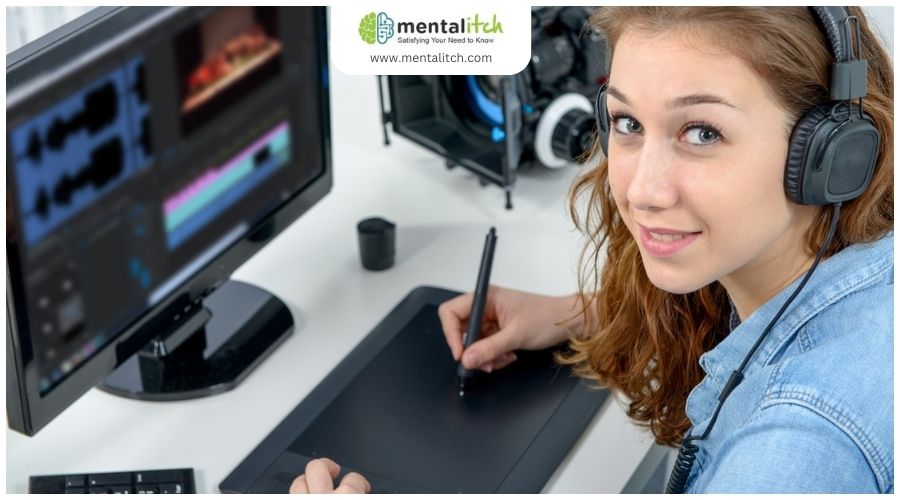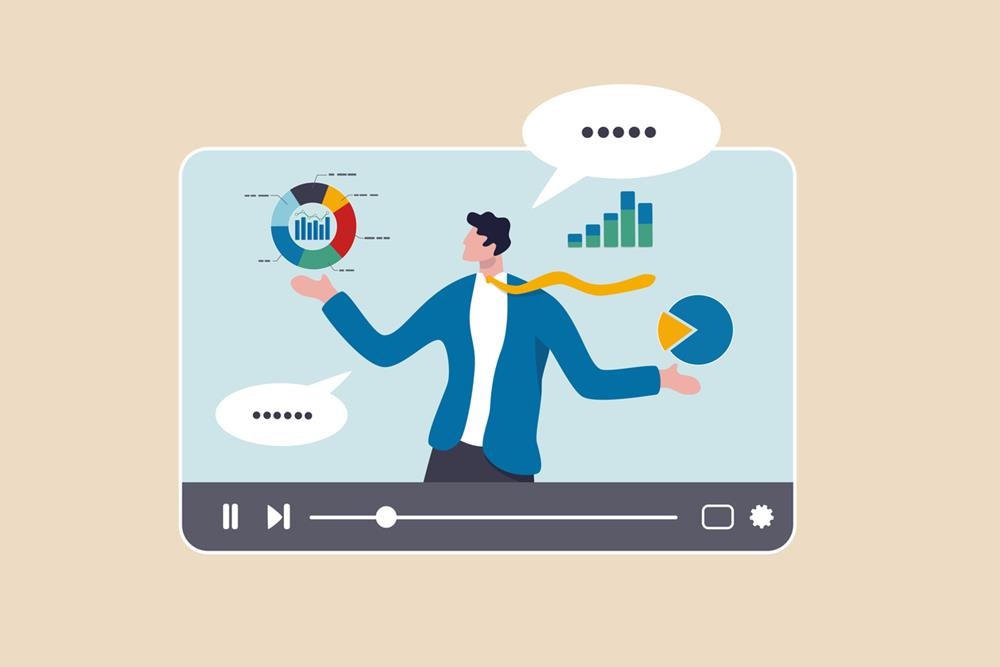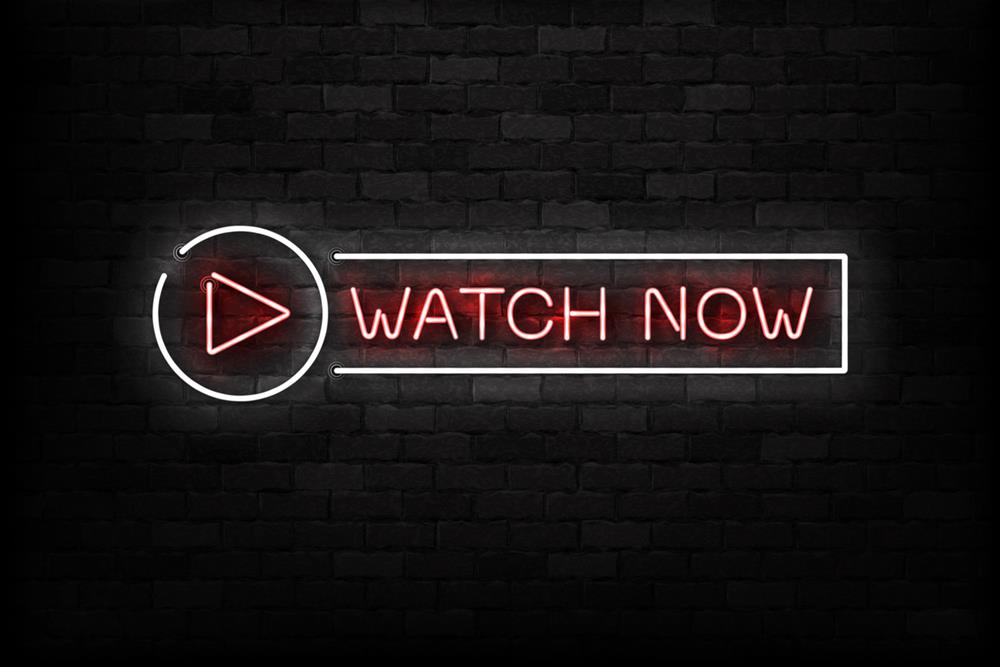Animation video production is like making a mini-movie, but instead of filming real people and places, we create them using computers and drawings. This process lets us tell stories, explain ideas, or show how things work in a fun and engaging way. Whether it’s a cartoon, a movie effect, or a short clip for a website, animation can help make any idea come to life. In this article, we’ll explore what goes into making these animated videos and why they’re so powerful at grabbing our attention and making complex ideas easy to understand.
Foundations for Better Understanding
Understanding animation video production starts with getting to know the basics. Animation isn’t just about making drawings move; it’s a complex process that combines art, storytelling, and technology to create something truly magical. Let’s break down what animation video production involves and the different types that are out there.
What is Animation Video Production?
At its core, animation video production is the process of creating moving images in a digital environment. This can range from simple animations, like a bouncing ball, to complex scenes in movies with detailed characters and backgrounds. The goal is often to tell a story, explain a concept, or simply entertain an audience.
Types of Animation
There are several different types of animation, each offering its own unique look and feel. Understanding these types can help you choose the right style for your project:
- 2D Animation: This traditional form of animation involves creating characters and scenes in a two-dimensional space. It’s often used for cartoons and explainer videos.
- 3D Animation: More complex, 3D animation gives characters and objects depth, making them look more realistic. This type is common in movies and video games.
- Stop-Motion Animation: By taking pictures of real objects in small increments and playing them back rapidly, stop-motion animation makes it appear as though the objects are moving on their own.
- Motion Graphics: Focused more on dynamic graphics and text, motion graphics are often used in advertisements, title sequences, and informational videos.
Overview of the Animation Production Process
Creating an animation video is a step-by-step process that requires careful planning and execution. Here’s a brief overview:
- Concept and Script: Every animation starts with an idea. This idea is then turned into a script, which outlines what will happen in the animation.
- Storyboarding: The script is brought to life through storyboarding, where the main scenes are sketched out to visualize the story.
- Designing Characters and Environments: Artists create the characters, backgrounds, and any other elements that will appear in the animation.
- Animation: This is the stage where the actual movement is created, whether through drawing each frame by hand for 2D animation or using software for 3D models.
- Voice Over and Sound Effects: Audio elements like voiceovers and sound effects are added to enhance the storytelling.
- Editing and Final Touches: The animation is edited for pacing, and final touches are added, such as visual effects or color correction, to complete the video.
Understanding these basics of animation video production sets the foundation for diving deeper into how these elements come together to create compelling and engaging animated videos.
Building an Epic Relationship with Your Audience
Creating a strong bond with your audience is essential in animation video production. This connection is what turns viewers into fans, customers, and advocates for your brand or message. Animation has a unique power to weave stories and emotions that resonate deeply with audiences of all ages. Here’s how you can build that epic relationship through animated videos.
Emotional Engagement through Animated Storytelling
The heart of any great animation is its story. Animated videos have the ability to express complex emotions and ideas in ways that words alone cannot. They can make us laugh, cry, think, and feel inspired. By carefully crafting your animated stories to evoke specific emotions, you can create a memorable experience that sticks with viewers long after they’ve watched your video.
Utilizing Character Design and Narrative Arcs
- Character Design: Characters are often the bridge between the story and the audience. Designing relatable, memorable characters can help viewers see themselves in the story or aspire to be like the characters they’re watching. Whether it’s a heroic figure overcoming obstacles or a quirky sidekick offering comic relief, each character plays a role in making the story engaging.
- Narrative Arcs: A well-structured narrative arc takes the viewer on a journey. Beginning with a setup that introduces the characters and their world, moving into a conflict that needs to be resolved, and ending with a resolution, this arc is crucial for keeping viewers engaged. It’s the struggle and the resolution that often carry the most emotional weight, reinforcing the connection between your audience and your animation.
By focusing on emotional engagement, character-driven storytelling, and narrative arcs that resonate with viewers, animation video production can be a powerful tool in building an epic relationship with your audience. This connection is what transforms viewers into loyal followers, making them more likely to engage with your content, share it with others, and look forward to what you create next.
The Art and Craft of Video Editing
Video editing is a critical phase in the animation video production process, where the raw components of your story are woven together into a coherent and captivating narrative. This stage is where timing, pacing, and visual effects come into play, transforming individual scenes into a seamless story. Understanding the art and craft of video editing is essential for anyone looking to create impactful animation videos.
The Role of Editing in Animation
Editing in animation is not just about cutting and splicing together scenes. It’s an art form that involves rhythm, timing, and the seamless integration of visuals and sound. A well-edited animation video can enhance storytelling, control pacing, and create emotional impact. It’s the editor’s job to ensure that every frame serves the story and keeps the audience engaged from start to finish.
Techniques for Seamless Storytelling
- Pacing: The rhythm of the animation is crucial. Editing helps control the pace, ensuring that the story moves smoothly from fast-paced action to slower, more reflective moments. This dynamic flow keeps viewers engaged and prevents the animation from becoming monotonous.
- Continuity: Maintaining continuity is essential for immersion. Editors work to ensure that characters, objects, and environments are consistent from scene to scene, supporting a cohesive narrative world.
- Transitions: The creative use of transitions between scenes can add stylistic flair to the animation and help convey the passage of time or shifts in location. Whether using straight cuts, crossfades, or more elaborate effects, transitions are a key tool in the editor’s toolkit.
Tools and Software Commonly Used
The choice of editing software can greatly influence the editing process. Today’s animation editors have access to a wide range of tools that offer powerful features for cutting, compositing, color correction, and adding effects. Popular options include Adobe Premiere Pro, Final Cut Pro, and DaVinci Resolve. These platforms not only allow for precise editing but also provide a suite of tools for enhancing visual and audio elements.
The Impact of Sound
Sound editing is an integral part of video editing that significantly affects the final product. The integration of voice overs, music, and sound effects needs to be meticulously balanced and timed to enhance the storytelling without overwhelming the visuals. Sound can convey emotion, provide context, and even drive the narrative forward, making it a powerful tool in the editor’s arsenal.
Enhancing Your Message with Video Infographics
Video infographics are a dynamic way to present data, explain concepts, and tell stories. By combining the visual impact of graphics with the narrative power of video, infographics can significantly enhance your message, making it more engaging and easier to understand. Here’s how video infographics can transform the way you communicate with your audience.
What are Video Infographics?
Video infographics are animated videos that use visual representations of information, data, and statistics to convey messages quickly and clearly. They merge compelling graphics, short texts, icons, and sometimes voiceovers to break down complex information into digestible, easy-to-understand pieces. This format is particularly effective for educational content, marketing messages, and data-driven storytelling.
Benefits of Using Video Infographics
- Increased Engagement: The visual nature of infographics makes them more engaging than text-based communication. People are naturally drawn to visuals, which means they’re more likely to watch a video infographic and retain the information it presents.
- Improved Understanding: By simplifying complex data and concepts into visual formats, video infographics make it easier for audiences to understand and remember your message.
- Versatility: Video infographics can be used across various platforms, including social media, websites, and presentations, making them a versatile tool in your communication arsenal.
- Shareability: Due to their engaging and informative nature, video infographics are more likely to be shared, increasing the reach of your message.
Crafting Effective Video Infographics
- Focus on Clarity: The primary goal of a video infographic is to simplify information. Ensure that your visuals are clear and your message is straightforward.
- Tell a Story: Like any good video, your infographic should tell a story. Use a narrative structure to guide viewers through the information, making the experience more engaging and memorable.
- Visual Consistency: Maintain a consistent visual style throughout your infographic. This includes using a cohesive color scheme, typography, and imagery that aligns with your brand and the message you want to convey.
- Use Data Wisely: While infographics are great for showcasing data, too much information can be overwhelming. Highlight key statistics and facts that support your message and use visuals to represent them effectively.
Incorporating video infographics into your communication strategy can significantly enhance the effectiveness of your message. By making complex information more accessible and engaging, you can capture your audience’s attention, improve their understanding, and encourage them to take action.
Bringing Brands to Life with Logo Animation
In today’s digital age, creating a memorable brand identity is crucial. Logo animation is a dynamic way to inject life into your brand, making it stand out in a crowded marketplace. By adding motion to your logo, you not only capture attention but also convey your brand’s essence in a few seconds. Let’s explore how logo animation can elevate your brand and how to go about creating an animated logo that resonates with your audience.
The Importance of Logo Animation in Branding
Logo animation transforms static logos into something vibrant and eye-catching. It’s not just about the visual appeal; animated logos can tell a story about your brand, its values, and its personality. This motion can be used across various platforms, from your website’s homepage to social media channels, creating a consistent and engaging brand experience.
The Process of Animating Logos
- Conceptualization: The first step is to decide what story you want your animated logo to tell. Consider your brand’s core values and personality. The animation should reflect these elements, whether it’s through elegant motion that conveys luxury or playful animation that reflects a fun, approachable brand.
- Designing for Animation: Not all logos are suitable for animation. The design might need to be tweaked or simplified to ensure it looks good in motion. This step may involve working closely with a graphic designer and an animator to create a version of your logo that’s optimized for animation.
- Choosing the Right Animation Style: The style of animation should match your brand identity. Whether it’s a smooth and slow fade, a quirky bounce, or a complex 3D animation, the motion should enhance the logo’s design and the brand’s story.
- Adding Sound Effects: While not always necessary, sound effects can complement the visual animation and reinforce brand identity. The key is choosing or creating sounds that align with the visual elements and overall brand personality.
Benefits of Animated Logos
- Enhanced Brand Awareness: An animated logo is more memorable than a static one. The movement catches the eye, making potential customers more likely to remember your brand.
- Emotional Connection: Animation can evoke emotions, whether it’s excitement, curiosity, or trust. This emotional engagement can strengthen the connection between your brand and your audience.
- Professionalism and Innovation: A well-executed animated logo signals that your brand values quality and innovation, positioning you as a leader in your industry.
Animating your logo is an effective strategy to bring your brand to life and make a lasting impression on your audience. It’s a creative process that requires thought, planning, and a clear understanding of your brand identity.
Explainer Videos – Simplifying Complex Ideas
Explainer videos are a potent tool in the digital age, adept at breaking down complex ideas into digestible, engaging pieces of content. These short, informative videos are designed to explain your product, service, or a specific concept clearly and concisely. Let’s dive into the essence of explainer videos and how they can transform complicated subjects into simple, understandable messages.
Definition and Purpose of Explainer Videos
An explainer video is typically a short, animated video that focuses on explaining a business idea in a simple, engaging, and compelling way, using clear and concise language. They’re often used on landing pages, the home page of a website, or a prominent product page. The main goal is to improve audience understanding of your product or service, thereby increasing conversion rates and sales.
Key Elements of a Successful Explainer Video
- Clear and Concise Script: The foundation of a great explainer video is its script. It should be straightforward, focusing on solving a problem, how your product or service solves this problem, and why it’s the best option.
- Engaging Visuals: Visuals should complement the script, illustrating key points and keeping the viewer engaged. The animation style should match the brand’s personality and the tone of the message.
- Professional Voiceover: A professional voiceover can significantly impact the video’s effectiveness. The tone, pace, and emotion of the voice should align with the brand’s character and the video’s content.
- Background Music and Sound Effects: These elements should enhance the viewing experience, not distract from the message. When used correctly, they can help emphasize key points and evoke the desired emotional response.
Benefits of Explainer Videos
- Increased Understanding: By simplifying complex ideas, explainer videos help audiences grasp concepts quickly and efficiently.
- Enhanced Engagement: People are more likely to engage with video content than text, making explainer videos an excellent tool for capturing and retaining audience attention.
- Boosted Conversion Rates: Videos can help demystify your product or service, making potential customers more likely to make a purchase or sign up.
- Versatile Use: Beyond your website, explainer videos can be shared across social media platforms, used in presentations, or included in email marketing campaigns, extending their reach and utility.
Crafting an Explainer Video: From Script to Screen
- Identify the Core Message: Start with the key message you want to convey. What problem does your product or service solve? Keep the focus narrow to avoid diluting the message.
- Write a Compelling Script: The script is the backbone of your video. Keep it simple, engaging, and to the point.
- Choose the Right Animation Style: Whether it’s 2D, 3D, stop-motion, or something else, the style should reflect your brand and the message you’re conveying.
- Professional Production: High-quality production values are crucial. This means professional voiceover, animation, and sound design.
Explainer videos are a powerful way to communicate complex ideas in an easily digestible format. They combine visual and auditory stimuli to explain your product, service, or concept quickly and effectively.
Demonstrating Your Product with Demo Videos
Demo videos are an effective way to showcase the features, benefits, and real-world applications of your product or service. By providing a visual demonstration, you can help potential customers understand how your product works and why it’s the right solution for their needs. Let’s explore the key aspects of creating a compelling demo video and how it can make a difference in your marketing efforts.
The Importance of Demo Videos in Product Marketing
Demo videos go beyond simple explanations, offering viewers a firsthand look at how a product operates in real-life situations. They can highlight a product’s unique selling points, ease of use, and efficiency. For many consumers, seeing is believing; a demo video can be the deciding factor in choosing your product over competitors.
Crafting a Demo Video: Script to Screen
Identify the Key Features and Benefits: Start by listing the features you want to showcase and the benefits they offer. Focus on what sets your product apart and how it solves common problems for your users.
- Plan Your Demonstration: Decide how you will demonstrate each feature. Will you use real-life scenarios, a step-by-step tutorial, or a combination of both? Planning this in advance ensures a smooth, logical flow that viewers can easily follow.
- Write a Clear, Concise Script: Your script should guide the viewer through each feature and benefit, emphasizing how the product can be used in their daily lives. Keep language simple and avoid jargon to ensure it’s accessible to all viewers.
- High-Quality Production: Invest in high-quality video production to make a positive impression. This includes clear visuals, professional lighting, and clean audio. A well-produced demo video reflects the quality of your product.
- Call to Action: End your video with a clear call to action. Whether it’s visiting your website, signing up for a trial, or making a purchase, tell viewers exactly what you want them to do next.
Tips for Making Demo Videos More Engaging and Informative
- Show Real-Life Use Cases: Demonstrating how your product works in a real-world context can help viewers imagine using it themselves.
- Feature Customer Testimonials: Including brief testimonials within the demo can add credibility and show potential customers the value your product has provided to others.
- Use Annotations and Highlights: Visual cues, such as arrows or circles, can draw attention to key features or buttons, making it easier for viewers to follow along.
- Keep It Short and Sweet: Aim for brevity. A demo video should be long enough to cover the key features but short enough to maintain the viewer’s interest.
Demo videos are a powerful tool in the marketing toolkit, capable of transforming curiosity into conviction by visually demonstrating your product’s value.
Conclusion
In the journey of animation video production, we’ve explored everything from the basics of bringing your ideas to life through animation to creating deep connections with your audience and effectively demonstrating your products with demo videos. Each step, from understanding the foundation of animation to engaging your audience with compelling narratives and visuals, plays a crucial role in creating impactful and memorable content.
Whether it’s through explainer videos that simplify complex concepts or through the dynamic storytelling of logo animations, the goal is always to communicate your message in the most engaging way possible. By following these insights, you’re well-equipped to create animation videos that not only captivate your audience but also drive your message home.
Remember, the power of animation lies in its ability to bring stories to life and connect with viewers on a profound level. So, get creative, stay focused on your message, and let your animations do the talking!
Additional Information
WOW-HOW Video Production
WOW-HOW Video Production stands as a beacon of creativity and expertise in the realm of video creation. This agency, fueled by a passionate team of professionals, dedicates itself to crafting videos that not only resonate with quality but also embody honesty and dynamism. With over a decade of experience under their belt, WOW-HOW has successfully partnered with numerous brands, bringing a wide array of projects to life—from captivating logo designs to engaging website videos.
At the heart of WOW-HOW is a commitment to transforming ideas into reality, infusing each project with meaning, and turning visions into tangible successes. Whether you’re looking to enhance your business with videos that entertain, educate, or engage, their team is adept at breathing life into your concepts, ensuring that your message not only reaches but also impacts your audience.
For those seeking excellence in animation video production, WOW-HOW offers unparalleled services. Entrust your vision to their capable hands and witness the transformation of your ideas into a dynamic video narrative that propels your business forward.








